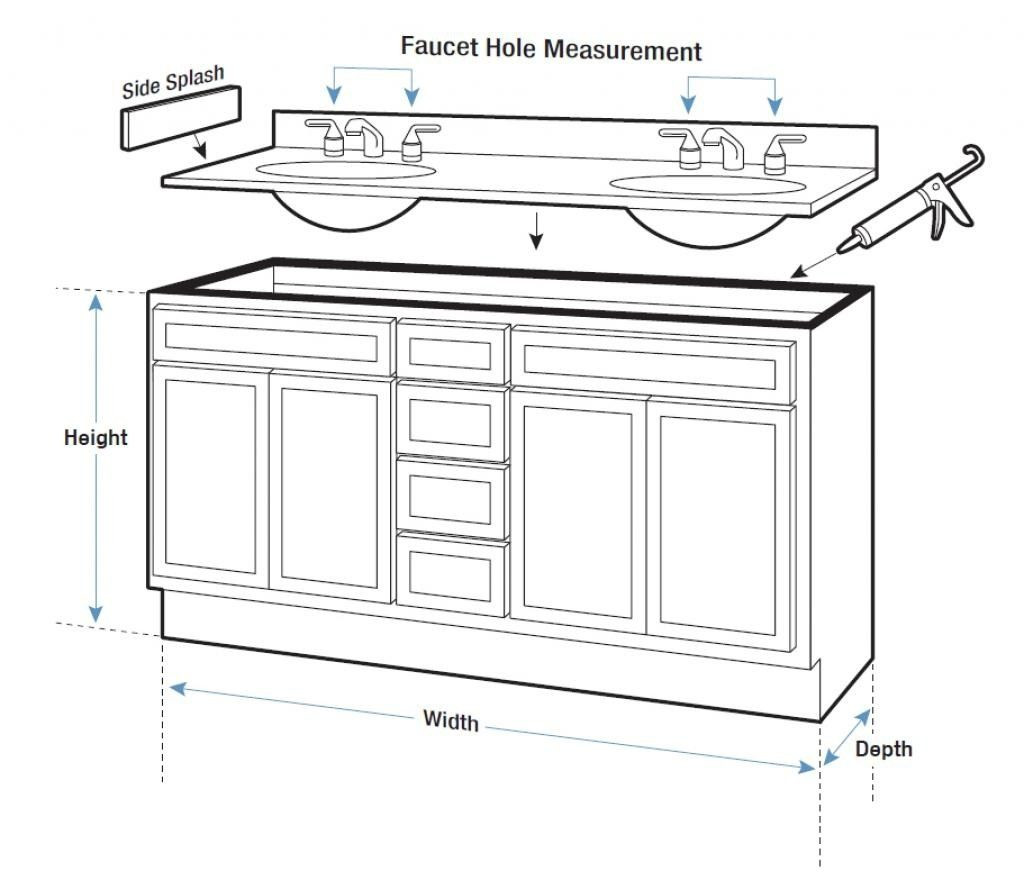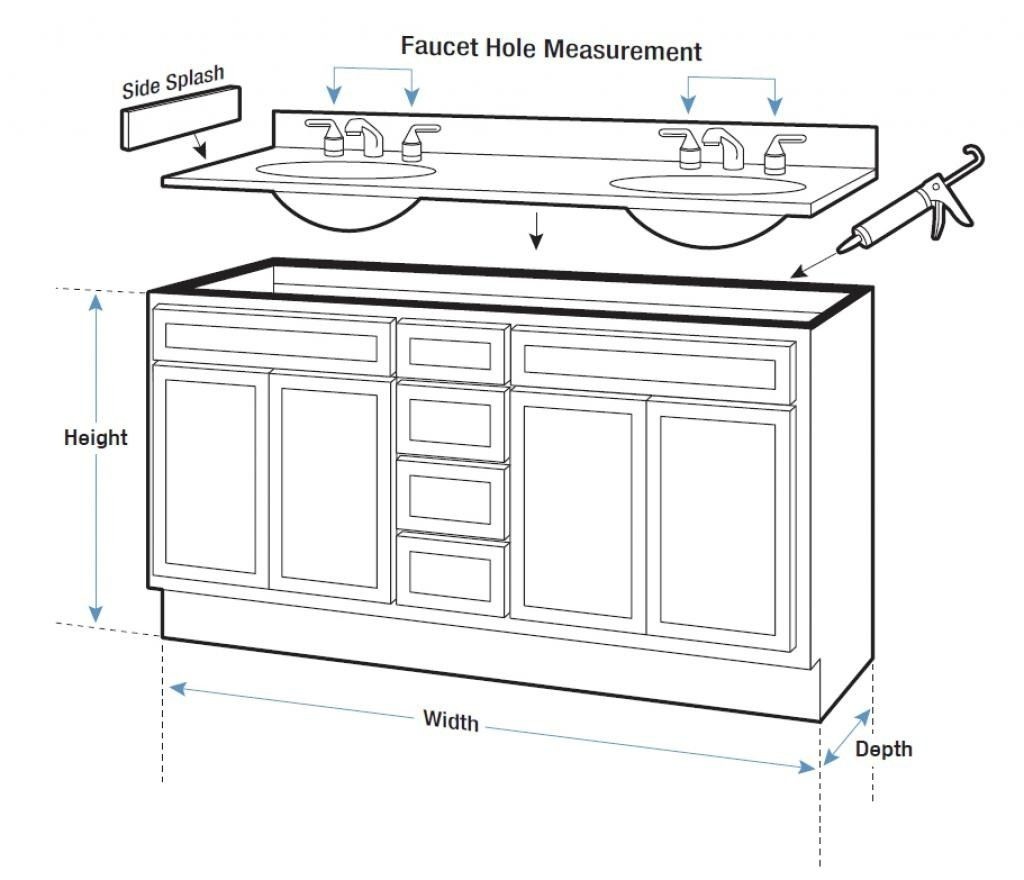Standard Bathroom Cabinet Heights

Bathroom cabinets are essential fixtures in any bathroom, offering valuable storage space for toiletries, towels, and other bathroom essentials. They come in various sizes and configurations, but the height of bathroom cabinets is a crucial factor to consider for both functionality and aesthetics. This section explores the typical heights of bathroom cabinets, providing insights into standard ranges and the factors that influence their design.
Average Heights of Bathroom Cabinets
The average height of bathroom cabinets varies depending on the type of cabinet and the region or country. Here’s a table comparing the average heights of bathroom cabinets across different regions:
| Region | Lower Cabinet Height (inches) | Upper Cabinet Height (inches) |
|---|---|---|
| North America | 30-36 | 30-36 |
| Europe | 30-34 | 30-34 |
| Australia | 32-36 | 32-36 |
It’s important to note that these are just average heights, and actual cabinet heights may vary depending on the manufacturer and specific design.
Factors Influencing Bathroom Cabinet Heights
Several factors influence the standard height of bathroom cabinets. These factors include:
- Accessibility Guidelines: Accessibility guidelines, such as the Americans with Disabilities Act (ADA) in the United States, stipulate minimum and maximum heights for bathroom fixtures, including cabinets. These guidelines ensure that bathrooms are accessible to people with disabilities. For example, the ADA recommends a maximum height of 34 inches for lower cabinets to ensure easy access for individuals in wheelchairs.
- Plumbing Fixtures: The placement of plumbing fixtures, such as sinks and toilets, influences the height of bathroom cabinets. Lower cabinets are typically positioned below the sink, while upper cabinets are often placed above the sink or toilet. The height of these fixtures dictates the height of the cabinets to ensure proper clearance and functionality.
- Countertop Heights: The height of the countertop in a bathroom also plays a role in determining the height of lower cabinets. Countertops are typically designed at a comfortable height for standing or sitting, and the lower cabinets are positioned below the countertop to provide storage space.
Factors Affecting Bathroom Cabinet Height

The optimal height of bathroom cabinets is influenced by various factors, including ceiling height, personal preferences, and functional considerations. While standard heights exist, individual circumstances necessitate adjustments for optimal functionality and aesthetics.
Impact of Ceiling Height on Bathroom Cabinet Height, Average height of bathroom cabinets
Ceiling height significantly impacts the ideal height of bathroom cabinets. Higher ceilings allow for taller cabinets, maximizing storage space and creating a sense of grandeur. Conversely, lower ceilings necessitate shorter cabinets to avoid creating a cramped or overwhelming atmosphere.
A general guideline is to maintain a minimum of 6-8 inches of clearance between the top of the cabinet and the ceiling. This space allows for proper ventilation and prevents the feeling of being boxed in.
Bathroom Layout with Varying Ceiling Heights
Consider a bathroom with a vaulted ceiling in the shower area and a standard ceiling height in the vanity area. In the shower area, tall cabinets reaching close to the vaulted ceiling can be utilized, maximizing storage space. In the vanity area, shorter cabinets are recommended to avoid creating a disproportionate or overwhelming appearance.
Tall Bathroom Cabinets vs. Multiple Smaller Cabinets
Tall bathroom cabinets offer a significant advantage in terms of storage capacity. They can accommodate a wide array of items, from towels and toiletries to linens and cleaning supplies. However, they can be visually imposing and require more space to access items at higher levels.
- Tall Cabinets:
- Advantages:
- Maximize storage space.
- Offer a streamlined and cohesive look.
- Disadvantages:
- Can be visually imposing in smaller bathrooms.
- Require more effort to access items at higher levels.
- Advantages:
- Multiple Smaller Cabinets:
- Advantages:
- Create a more balanced and less overwhelming visual appeal.
- Provide easier access to items at all levels.
- Disadvantages:
- May require more floor space to accommodate multiple cabinets.
- Can lead to a less cohesive and more cluttered look.
Ergonomics and Accessibility: Average Height Of Bathroom Cabinets

Ergonomics plays a crucial role in bathroom design, ensuring comfortable and efficient use, particularly for cabinet placement. Properly positioned cabinets enhance usability, reduce strain, and promote accessibility for individuals with mobility limitations.Cabinet Placement for Optimal Reach and Comfort
The ideal cabinet height is determined by factors such as user height, reach, and the intended use of the cabinet. Here’s a visual guide illustrating proper cabinet placement for optimal reach and comfort:
For most individuals, the optimal height for frequently used cabinets is within the “comfort zone,” which is approximately from the elbow to the shoulder height.
- Upper Cabinets: Upper cabinets should be positioned high enough to avoid bumping your head but low enough for easy access. Ideally, the bottom shelf should be placed at a height that allows you to comfortably reach items without straining. This is typically around 60 to 70 inches from the floor.
- Lower Cabinets: Lower cabinets should be positioned at a height that allows you to comfortably reach items without bending over excessively. A height of 30 to 36 inches from the floor is generally recommended for lower cabinets.
- Vanity Cabinets: Vanity cabinets should be positioned at a height that allows you to comfortably wash your hands and brush your teeth. A height of 32 to 36 inches from the floor is typically recommended for vanity cabinets.
Designing Accessible Bathroom Spaces
Designing accessible bathroom spaces with cabinets suitable for individuals with mobility limitations requires careful consideration. Here are some tips:
- Adjustable Shelves: Consider using adjustable shelves in both upper and lower cabinets to accommodate varying needs and preferences. Adjustable shelves allow users to customize the height of the shelves to suit their individual reach.
- Pull-out Shelves: Pull-out shelves make it easier to access items stored in lower cabinets, particularly for individuals with limited mobility or reach. Pull-out shelves allow users to retrieve items without having to bend over or reach deep into the cabinet.
- Open Shelving: Open shelving can be a more accessible option for individuals who find it difficult to reach into cabinets. Open shelving eliminates the need to open doors or drawers, making it easier to access items.
- Knee Space: Ensure sufficient knee space beneath vanity cabinets to accommodate individuals using wheelchairs or mobility aids. A minimum of 27 inches of knee space is recommended for wheelchair accessibility.
The average height of bathroom cabinets is often dictated by the user’s height and the layout of the bathroom. However, when seeking a more stylish and functional storage solution, consider a bathroom storage cabinet wicker. These cabinets, while often lower than standard cabinets, can be customized to suit your space and provide a unique touch.
Ultimately, the ideal height for your bathroom cabinet depends on your personal preferences and the overall design of your space.
While the average height of bathroom cabinets hovers around 34 inches, those with limited space might find a small bathroom cabinet with doors a more practical solution. These compact cabinets, often measuring between 24-30 inches in height, can maximize storage without overwhelming the room.
When considering a smaller cabinet, it’s important to factor in the height of your countertop and the reach of the tallest user.
- Advantages:
